
Whether your channel is new or established, the best YouTube cameras will help you on your way to winning a Gold Play Button. We’ve spent hours and hours testing the top YouTube cameras, and highlighted our favorites in the guide below. Whatever your genre, you’ll find your ideal YouTube camera here.
Based on our in-depth reviews, we think the best YouTube camera for most people right now is the Panasonic Lumix GH6. It doesn’t have the livestreaming abilities of the GH5 Mark II, but it does offer a vast array of shooting modes and formats to improve the quality of your YouTube content. We also rate it as the best 4K camera you can buy. That said, we know it won’t be the perfect choice for everyone.
That’s why our round-up covers the best YouTube cameras in every category. From travel cameras to mirrorless flagships, we’ve tested each model in the real world to see how it performs. Our experts review factors such as video quality, audio connectivity and usability, as well as battery life, handling and more. You’ll find the results in our round-up, as well as useful buying advice to help you make your choice.

Timothy Coleman
Tim is TechRadar’s Cameras editor, with over 15 years in the photo video industry and most of those in the world of tech journalism, Tim has developed a deeply technical knowledge and practical experience with all things camera related. Tim notes, “YouTube cameras today come in a range of shapes and sizes, spanning everything from pocket-friendly action cameras to full-frame mirrorless models. Recognizing that different YouTubers have different shooting requirements, we’ve covered all bases and budgets in the list below.”
The quick list
Use the summary round-up below to get an overview of the best YouTube cameras. When you find one that fits your need and budget, you can use the links beneath each entry to jump down to our full insights.

The best YouTube camera overall
Compact yet packed with video features, the Lumix GH6 is the top choice for YouTubers who don’t need livestreaming.
Read more below
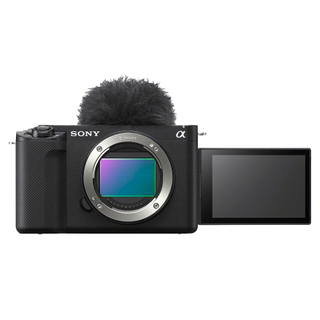
The best YouTube camera with AI tools
Equipped with AI framing and tracking smarts, the ZV-E1 makes it easy to shoot high-quality handheld solo vlogs for YouTube.
Read more below

The best premium compact for YouTube
Feature-packed and pocket-friendly, the Sony ZV-1 is our favorite compact camera for recording Youtube videos.
Read more below
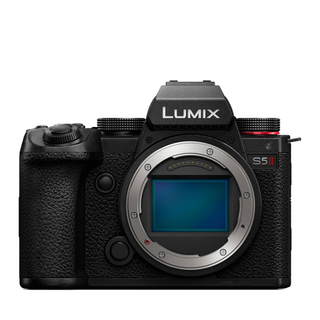
The best YouTube camera for enthusiasts
A 6K workhorse with phase detection autofocus and effective stabilization, the Lumix S5 II ideal for YouTube videographers.
Read more below

The best 6K camera for enthusiasts
Automated modes and better subject tracking complement 6K/30p video to make the X-S20 an APS-C winner for YouTubers.
Read more below

The best budget YouTube camera
Travel-friendly and easy to use, DJI’s upgraded gimbal pairs subject tracking with superb stabilization for solo YouTube vloggers.
Read more below
Load the next 5 products…
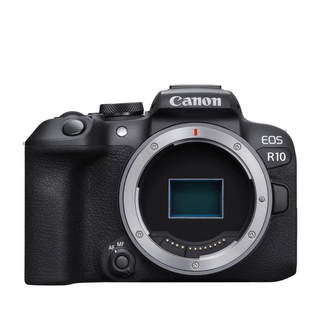
The best YouTube camera for beginners
Modern autofocus, good handling and 4K/30p video cropped from 6K make the Canon EOS R10 a great option for beginners.
Read more below

8. Canon PowerShot G7 X Mark III
The best value compact YouTube camera
4K video, a 3.5mm mic input, a flip-up screen and livestreaming to YouTube mean this compact still offers great value.
Read more below
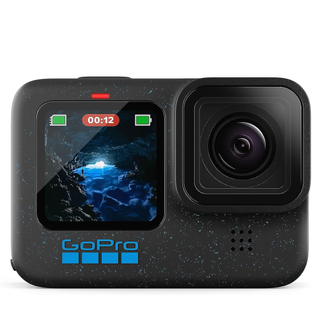
The best YouTube action camera
It’s not a huge upgrade, but new audio options and a crop-friendly aspect ratio make the Hero 12 Black great for content creators.
Read more below
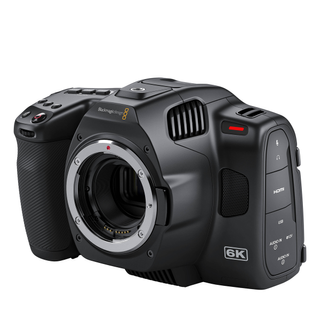
10. Blackmagic Pocket Cinema Camera 6K Pro
The best value pro YouTube camera
It’s not without quirks, but the 6K Pro is a tidy, relatively affordable tool for pro YouTube videographers to shoot footage at 6K/50p.
Read more below
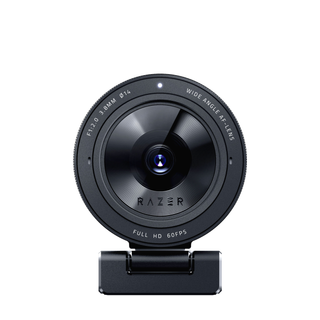
The best webcam for YouTube
It’s pricey for a webcam, but if streaming is your YouTube niche, the Kiyo Pro does it at a buttery 60fps.
Read more below
The best YouTube cameras in 2024
Why you can trust TechRadar
We spend hours testing every product or service we review, so you can be sure you’re buying the best. Find out more about how we test.
Below you’ll find full write-ups for each of the best YouTube cameras in our list. We’ve tested each one extensively, so you can be sure that our recommendations can be trusted.
The best YouTube camera for most people
Panasonic Lumix GH6 sample video
Buy it if:
✅ You want a lightweight powerhouse: Despite its tidy proportions, the GH6 is a video monster, with 10-bit ProRes support and unlimited recording times.
✅ You value a rugged build: Designed around a magnesium frame, the Panasonic GH6 is a tough camera that’s both dust- and splash-proof.
Don’t buy it if:
❌ You need the very best autofocus: Contrast-based autofocus works well here, but it still lags behind the hybrid phase detection used by rivals.
❌ You want a full-frame sensor: The Micro Four Thirds sensor inside the GH6 delivers excellent results, but full-frame is better for low light.
Panasonic’s GH5 Mark II is an excellent camera for creating 4K content, with the added bonus of letting you live-stream straight to YouTube. The GH6 loses the streaming option but improves pretty much every other spec: with a 25.2MP Micro Four Thirds sensor, it can shoot 5.7K footage at 30fps. Overkill for casual YouTubers, its 10-bit video modes provide huge flexibility for those who like to color grade in post. Usefully, ProRes and H.265 formats are supported by both the GH6 and YouTube. The V2.3 firmware update also enhanced its external recording capabilities to include 12-bit Blackmagic RAW, and added support for 4K/120p via HDMI.
Slightly larger than the GH5 Mark II, the GH6 remains a relatively compact tool for shooting YouTube videos outside a studio. Forced-fan cooling also means unlimited recording times – handy if you’re targeting YouTube’s 12-hour cap for verified accounts. During our tests, we appreciated its robust, familiar build, plus a few useful features not present on other Lumix models: the free-angle touchscreen also tilts, there are tally lights front and back, plus a record button on the front. An algorithmic upgrade has also boosted stabilization performance. If you can do without phase-detection autofocus offered by the Lumix S5 II (below), the GH6 is a portable powerhouse for YouTubers.
Read our in-depth Panasonic Lumix GH6 review
The best YouTube camera with AI tools
Sony ZV-E1 sample video
Buy it if:
✅ You’re a solo YouTuber: Compact and equipped with clever AI modes that automate framing, the ZV-E1 is ideal for working alone.
✅ You like streamlined edits: Tools like Auto Framing limit the need for editing, while the Cine Vlog setting looks good out of the camera.
Don’t buy it if:
❌ You don’t shoot slow motion: If higher frame rates aren’t in your content calendar, the Sony ZV-E10 may offer better value.
❌ You’re a serious videographer: For cooling vents, dual card slots and unlimited record times, you’ll want to look at the Sony FX3.
If you want a compact YouTube camera that’s easy to use, the Sony ZV-E1 should sit high on your list. The ZV-E10 trumps it for outright portability, but as the smallest, lightest full-frame camera with image stabilization, the ZV-E1 is arguably the ultimate combination of convenience and quality for shooting YouTube content on the move. During our review, the ZV-E1 captured crisp 4K 30p video in a range of shooting scenarios. Its in-body image stabilization also proved impressive, delivering fantastically smooth footage that’s ideal for run and gun YouTubers who want to shoot handheld without a gimbal.
The ZV-E1 uses AI smarts to make life easier for solo content creators: Auto Framing can reliably track subjects across a scene, which leaves less to edit later. With no cooling vents and only a single card slot, the ZV-E1 isn’t the perfect YouTube camera for power users. It was also a little tricky in testing to see the touchscreen when shooting outside. But for individual creators who want a full-frame tool that’s clever and easy to use, the ZV-E1 is a top choice for 4K filming.
Read our in-depth Sony ZV-E1 review
The best premium compact for YouTube
Sony ZV-1 sample video
Buy it if:
✅ You want a powerful pocket tool: Small yet capable of 4K that beats your smartphone, this is the best compact for YouTubers.
✅ You want class-leading autofocus: A bright lens and top-tier autofocus make a great combination for recording at close quarters.
Don’t buy it if:
❌ You want the smoothest handheld video: Active SteadyShot stabilization is good but the gimbal on the DJI Pocket 2 does better.
❌ You need an all-weather camera: While the Sony ZV-1 is well-made, it lacks weather-proofing, so it can’t be used in all conditions.
The Sony ZV-1 delivers pretty much everything the roaming YouTuber needs, all in a compact package. Sony’s class-leading Real-time tracking and Real-time Eye AF systems keep you in focus as you move around the frame, while the bright lens and large 1-inch sensor size mean clear, crisp images in most conditions, as well as attractive background bokeh – a rarity on pocket-sized cameras. Naturally, it’s not completely flawless: we found the touchscreen controls a little limited and Sony’s stuck with the ageing microUSB rather than a more versatile USB-C port. Video stabilization also falls just short of the best.
That said, we found thoughtful touches everywhere in our review. The hotshoe can accommodate an external mic or LED light without blocking the side-flipping touchscreen; the video record button is larger than on regular compacts; and a built-in ND filter helps you shoot smooth movement on brighter days. It even offers a ‘Product Showcase’ feature aimed specifically at reviews-based YouTubers. The ZV-1F is a simpler grab-and-go option, while the ZV-E10 is a clear step up for vloggers. But if you want the best balance of price, performance and portability, the Sony ZV-E1 is the top premium compact for YouTubers.
Read our in-depth Sony ZV-1 review
The best YouTube camera for filmmakers
Panasonic Lumix S5 II sample video
Buy it if:
✅ You crop your clips: Uncropped 6K recording means you can easily crop video to different aspect ratios for different platforms.
✅ You’re a run-and-gun shooter: Image stabilization, phase detection AF and a lightweight body make the S5 II ideal for shooting on the move.
Don’t buy it if:
❌ You shoot a lot of slow-mo: There’s a limiting 1.5x crop on 4K/60p video, which can be limiting when you want a wide view.
❌ You want stylish camera: Design is subjective, but the angular DSLR styling of the S5 II won’t be to every taste.
Many YouTubers don’t need a full-frame camera. But if you want to record YouTube videos with a larger sensor, we highly rate the Panasonic S5 II. It weighs less than the Panasonic GH6, yet still feels solid in the hand. We also found it intuitive to control in testing, aided by a crisp vari-angle touchscreen. While some will feel the absence of a tally light, the introduction of phase detection autofocus for video is an overdue and welcome one. We particularly appreciate the ability to change speed and sensitivity, which allows for smooth focus shifts.
From our review, the Panasonic S5 II excels when shooting video. It produces excellent 6K/30p footage for YouTube, capturing rich colors and wide dynamic range. Usefully, 6K is recorded using the full area of the sensor, which means you can crop content for different uses within your videos. Effective image stabilization also makes it capable of shooting YouTube content handheld. 4K/60p does come with a restrictive 1.5x crop, while features such as wireless IP streaming are kept back for the more expensive Lumix S5 IIX. All the same, we rank the Lumix S5 II as a convincing hybrid package for YouTubers.
Read our in-depth Panasonic Lumix S5 II review
The best YouTube camera for enthusiasts
Fujifilm X-S20 sample video
Buy it if:
✅ You plan to record all day: With a battery life double that of the X-S10, the X-S20 will last for a full day of moderate use.
✅ You’re a beginner with ambition: It’s pricey, but the X-S20 is beginner friendly while offering lots of room to grow.
Don’t buy it if:
❌ You need a tough camera: The X-S20 has excellent build quality, but it isn’t sealed against the elements.
❌ You’re on a tight budget: The X-S20 is a highly capable 6K hybrid, but you’ll pay for the privilege of its skills.
With automated features designed to make vlogging easier, the Fujifilm X-S20 is a user-friendly upgrade from the X-S10 – already one of the top YouTube cameras. The 26.1MP sensor inside has already proven its abilities in the X-S10 and X-T4. But the X-S20 steps things up with 6K/30p 4:2:2 10-bit internal recording. This will be more than most YouTubers need, but it makes the X-S20 a great choice for hobbyists who are serious about shooting and sharing video. Better in-body image stabilization also proved effective in testing for recording handheld.
We found it comfortable to handle in testing, too, with straightforward top plate dials making it easier to control more advanced settings. The balanced design and articulating touchscreen of the X-S10 continue to serve it well. We only wish that Fujifilm had added weather sealing. Still, with creative settings – such as ‘Background Defocus’ and ‘Product Priority’ – just a tap away in the dedicated Vlog mode, the X-S20 is a tempting proposition for creating YouTube content, even if its price tag will discourage some beginners,
Read our in-depth Fujifilm X-S20 review
The best budget YouTube camera
DJI Osmo Pocket 3 sample video
Buy it if:
✅ You want steady YouTube Shorts: Portrait recording with stabilization at 3K resolution makes the Pocket 3 a content creator’s dream.
✅ You record videos alone: Face auto-detect and dynamic framing mean the Pocket 3 can do the job of a recording crew, without breaking the bank.
Don’t buy it if:
❌ You already own a Pocket 2: If you don’t need portrait recording or low-light improvements, you’ll find better value by waiting for the Pocket 4.
❌ You like a large touchscreen: While the 2-inch display is twice the size, it’s still on the small size compared to mirrorless rivals.
Like the Pocket 2, DJI’s latest vlogging camera is a handheld, three-axis gimbal camera that shoots stabilized 4K video on the fly. It’s also the most affordable model in this list, and benefits from a fleet of new features that make it a more compelling YouTube camera. Chief among them is a new 1-inch sensor. In testing, we found that it delivers excellent dynamic range, while improving low-light performance. Paired with the introduction of live-streaming support and portrait 3K recording, we think it has huge appeal for YouTube Shorts creators.
The upgraded battery capacity impressed in our review, too, offering a significant jump in longevity, while simultaneously halving the recharge time. ActiveTrack 6.0 performed flawlessly as well, with dynamic framing and automatic face tracking making it easy to shoot sharp videos solo. And at twice the size of the display on the Pocket 2, the Pocket 3’s touchscreen is still small but much more useful. We also appreciated its overall ease of use. As a travel- and budget-friendly tool for shooting detailed YouTube footage, the Pocket 3 is hard to beat.
Read our in-depth DJI Pocket 3 review
The best YouTube camera for beginners
Canon EOS R10 sample video
Buy it if:
✅ You’re a beginner YouTuber: Small, easy to use and equipped with powerful video features, the R10 is great for beginners.
✅ You want a hybrid camera: The R10 does stills and video very well, making it a great all-rounder for its size and price.
Don’t buy it if:
❌ You want a pro setup: With no headphone port or image stabilization, the R10 has entry-level skills for YouTube shooting.
❌ You like a wide choice of lenses: The R10 lacks a wide range of native lenses, which could limit creative flexibility.
Pairing accessibility with performance, we think the Canon EOS R10 is a great APS-C hybrid for fledgling YouTubers to get to grips with. In testing, we found it comfortable to hold, with a combination of dials, a joystick and an articulating touchscreen making it easy to control and shoot with. As well as a mic input, the EOS R10 features Canon’s multi-function accessory shoe, something not found even on some full-frame Canon models.
Low-light recording options are limited because the sensor isn’t backside-illuminated and there’s no in-body image stabilization. Even so, the EOS R10 performs well against mirrorless rivals. Uncropped 4K/30p is oversampled from the sensor’s 6K resolution, and even with a 1.56x crop, the ability to shoot 4K at 60fps is useful for YouTubers who want to create half-speed cut-scenes. While there’s no flat color profile, there is a useful ‘HDR PQ’ mode that delivers 4:2:2 10-bit quality, plus you can record clips for up to two hours. All of which make the EOS R10 a very capable hybrid shooting tool for new YouTube creators.
Read our in-depth Canon EOS R10 review
The best value compact YouTube camera
Canon PowerShot G7 X Mark III sample images
Buy it if:
✅ You want a video-first compact: Designed as a compact video tool, the Mark III puts reliable 4K recording in your pocket.
✅ You value physical controls: A responsive flip-up touchscreen is paired with four physical control dials for direct access.
Don’t buy it if:
❌ You want a hotshoe mic: Although there’s an input on the side, the Mark III doesn’t feature a hotshoe to support a microphone.
❌ You want the sharpest video: 4K quality from the Mark III is good but its small sensor can’t compete with the best in this list.
The latest incarnation of Canon’s G7 X series ups the video ante by adding 4K recording and a microphone socket. These slot in nicely beside the large 1-inch sensor, superb image stabilization, tilting touchscreen and USB charging to make this a very capable compact for making YouTube content. What’s more, it comes with YouTube live-streaming support out of the box: tether it to your smartphone or a Wi-Fi network and you can broadcast live to the world.
We found the camera sturdily built in our review, sitting nicely in the hand and benefitting from responsive touchscreen controls. Despite the microphone socket there’s no hotshoe, though, so you’ll have to mount your mic elsewhere. We also felt the contrast-detection autofocus system was a little less advanced than the hybrid setups on rivals like the Sony ZV-1. Still, YouTubers looking for a pocket-sized camera should definitely consider this a worthy alternative.
Read our in-depth Canon PowerShot G7X Mark III review
The best action camera for YouTube
GoPro Hero 12 Black sample video
Buy it if:
✅ You shoot for YouTube shorts: The sensor’s 8:7 aspect ratio gives you flexibility to crop for vertical videos.
✅ You’re a YouTube adventurer: Top-class image stabilization and versatile mounting options make this an adventurer’s best friend.
Don’t buy it if:
❌ You record low-light video for YouTube: Its unchanged 1/1.9-inch sensor size means the Hero 12 Black still struggles in dim conditions.
❌ You don’t shoot in portrait: If you record landscape videos, there’s better 5.3K value to be found from the Hero 10 Black.
A fresh iteration of GoPro’s proven recipe, the Hero 12 Black builds on the same hardware as the Hero 11 Black. Physically identical, it retains the same 27MP 8:7 aspect ratio sensor that accommodates cropping for YouTube Shorts. Video still maxes out at 5.3K/60p, with results that continued to impress in testing. And low-light performance remains a disappointing Achilles heel. But there are also enough new features to make this our favorite action camera for YouTube.
We found the addition of a 1/4-inch tripod thread between its mounting feet instantly useful, while HDR and GP-Log video capture unlocked even greater dynamic range in testing. Support for Bluetooth audio inputs is also a win for YouTube vloggers, as is HyperSmooth 6.0 stabilization, which we found to be supremely slick in our review. You get backwards-compatibility with existing accessories, including the Media Mod, as well as the familiarly intuitive touch interface, too. If you already own the Hero 11 Black, you won’t find too many headline improvements to justify an upgrade. But if you want a new YouTube action camera – or you’re switching from an older GoPro – the Hero 12 Black is the most complete option out there.
Read our in-depth GoPro Hero 12 Black review
The best value pro YouTube camera
Blackmagic Pocket Cinema Camera 6K Pro sample video
Buy it if:
✅ You want top-quality video: If your YouTube channel is focused on quality, the 6K Pro delivers superb results.
✅ You value handling: Its small size, large screen and simple controls make the 6K Pro a neat camera to operate and shoot with.
Don’t buy it if:
❌ You’re a novice: The 6K Pro isn’t a camera for beginners and doesn’t offer the user-friendly features to beginners learn the ropes of videography.
❌ You don’t have a powerful computer: Editing RAW 6K files requires serious computing oomph, so you’ll need a system with serious space and power.
A baffling camera for beginners, the Blackmagic Pocket Cinema Camera 6K Pro is a fantastic option for experienced video enthusiasts who want to take their YouTube content to the next level. Skipping many of the accessible features you’d expect from a consumer camera, the 6K Pro is instead dedicated to top-notch videography alone. That means no image stabilization, no tracking autofocus and seriously limited stills abilities. It also means you get a huge 5-inch tilting touchscreen – ideal for framing – built-in dual microphones, two mini XLR inputs, plus the option of adding an OLED viewfinder and battery grip.
Because it’s relatively compact, the 6K Pro is perfect for filming b-roll and off-the-cuff material for your next upload, while we liked the simple controls that give it an unfussy, focused feel. And as the name suggests, it can capture superb raw 6K video, complimented by time-saving integrated ND filters. If you know your way around a video camera – and you have the computer power and bandwidth to handle huge files – the 6K Pro is a truly powerful tool for the price.
Read our in-depth Blackmagic Pocket Cinema Camera 6K Pro review
The best webcam for YouTube
Razer Kiyo Pro sample images
Buy it if:
✅ You want a smoother stream: The Kiyo Pro favors frame rates over outright resolution, upgrading your YouTube channel with 60fps footage.
✅ You want an instant quality boost: The Kiyo Pro delivers fantastic quality out of the box, bettered only by rigging up a camera as a streaming tool.
Don’t buy it if:
❌ You’re on a tight budget: The Kiyo Pro is very expensive for a webcam, and there are cheaper alternatives if you don’t need the very best.
❌ You don’t have a free USB-A 3.0 port: You need a fast port for the Kiyo Pro to work, so it’s not a good fit for older hardware.
If your YouTube content consists of footage recorded at home, you won’t find many webcams better than the Razer Kiyo Pro. Styled like a DSLR lens, it can clip to the top of a monitor for slick sit-down streaming. Alternatively, use the tripod attachment to flexibly position the Pro – ideal for creative framing or recording handheld segments, such as unboxings. The camera itself is larger than a standard webcam due to its powerful sensor, which is capable of capturing footage at a smooth 60fps.
Exposure is excellent as standard and we found that the adaptive sensor does a stellar job pulling in all available light. Switching to HDR mode limits the frame rate to 30fps, but improves the balance of highlights and shadows. If your recording room includes low ambient lighting, the webcam’s color correction can occasionally misfire, but this is easily resolved with a burst of bright light. Setup is simple, while the ability to tweak settings via Razer’s Synapse software – including three fields of view – makes the Kiyo Pro ideal for all kinds of YouTube content.
Read our in-depth Razer Kiyo Pro review
How to choose the best YouTube camera for you
While your needs will vary slightly depending on the kind of videos you’re looking to shoot, there are five main features that you should look for in a YouTube camera:
1. Articulating screen
Whether it flips out to the side or pivots up to the top, an articulating screen is a godsend when trying to film yourself. By giving you a live preview of the shot composition, exposure and focus, it helps you get the basics right so you can concentrate on other aspects of your video.
2. Good autofocus
Manual focus has its place in filmmaking, but to keep everything as simple and straightforward as possible it pays to pick a camera with great video autofocus. Face and/or eye tracking helps if you tend to move around a lot in your videos, as the focus will adjust itself automatically to compensate.
3. Built-in stabilization
Filming on the hoof can result in shaky, hard to watch footage. Thankfully a lot of modern cameras come with image stabilization (optical, electronic or a combination of the two) to automatically compensates for motion. Some, it should be noted, do it much better than others. Alternatively, a gimbal can stabilize pretty much any camera, at the cost of adding bulk.
4. Audio options
A camera’s built-in microphone can record sound – but using an external microphone will vastly improve clarity and likely cut down on unwanted ambient noise. Check potential buys for mic inputs and a hot shoe for mounting mics. You might want to consider headphone sockets too: they allow you to monitor audio levels while recording.
5. Livestreaming options
This might not be vital for those making videos to upload after filming and editing, but for anyone who wants to broadcast live, it’s well worth checking to see if a potential camera supports YouTube livestreaming. It’s not just smartphones and webcams anymore – more and more cameras are coming with the technology built-in.
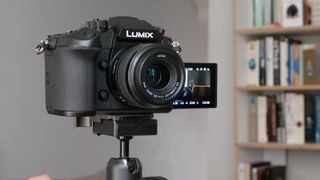
What camera do most YouTubers use?
YouTubers use a range of cameras to capture their content. As the list above illustrates, the most useful camera for a YouTuber will often be dictated by the type of content that they’re shooting, whether that’s in the studio or out on the street. But there are certain cameras which are particularly popular with a number of well-known YouTube content creators.
The Sony A7S III comes up time and again when YouTubers are asked about the gear they use. That’s no surprise: Sony’s Alpha series has long been popular with videographers, and the A7S III combines mirrorless performance and interchangeable lens versatility with a full-frame sensor that’s optimized for 4K video. It also supports all manner of filming formats, making it ideal for content creators who like to tweak their footage before sharing online. That said, the price tag of the A7S III (US$3,500 / £3,800 / AU$5,799) makes it an expensive option for most people.
It’s a similar story with some of the other equipment used by YouTubers, with cameras like the Panasonic Lumix S1H and Canon EOS R5 proving popular thanks to their comprehensive video specs, but with price tags that are prohibitive for fledgling content creators.
Helpfully, a number of YouTubers use less expensive cameras which can still capture high-quality footage. The Sony ZV-1 is increasingly becoming a favorite among YouTube vloggers who like to walk and talk, while the original Panasonic Lumix GH5 is another more affordable model which continues to be used by several YouTubers.
What’s more, many YouTubers today don’t use a camera at all. With dramatic improvements in the quality of smartphone videography, the best camera phones make it easy to shoot quick, sharp clips, ideal for vlog-style content or YouTube Shorts. With the best video editing apps, you can also use a smartphone to create cinematic content.
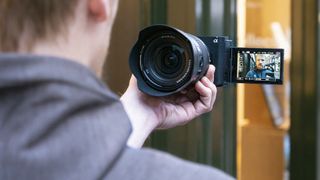
What camera is best for YouTube beginners?
As you’ll see from the comprehensive list above, the best YouTube cameras ship in a range of styles and formats. There’s no single camera that works best for every beginner, because the right choice will depend on how and what you plan to record for your YouTube channel. That’s why it’s worth reading our full guide to understand the merits of every option.
That said, the best beginner YouTube cameras are easy for first-timers to use. Many feature touchscreen interfaces that are familiar for smartphone users. Most are also easy to handle and feature automatic modes that let you shoot sharp, bright video content with little or no post-production work. Some of the best let you live-stream to YouTube, too.
One example is the Sony ZV-1, which we think is one of the best cameras for YouTube beginners. As a premium compact, its proportions will feel comfortable for anyone who’s ever wielded a point-and-shoot. Its interface is accessible too, with a large video record button and useful side-flipping touchscreen. Yet thanks to a capable 1-inch sensor, excellent autofocus and useful hotshoe mount on top, it’s also a versatile video tool. We also highly rate the Canon PowerShot G7X Mark III as a slightly older, more affordable premium compact.
If you’re planning to record YouTube vlogs in mixed conditions, something like the GoPro Hero 11 Black can record high-resolution video with class-leading stabilization. It also benefits from a streamlined touchscreen interface and handy front-facing display, all wrapped up in a rugged shell.
Or for a solo shooting tool that looks like nothing else, the DJI Pocket 2 is worth considering for beginners. It attaches a smartphone-style sensor to a stabilizing gimbal, then adds subject-tracking smarts into the mix. The result is a pocket-friendly tool for shooting YouTube content on the move.
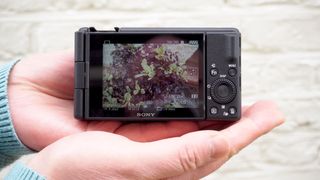
How we test YouTube cameras
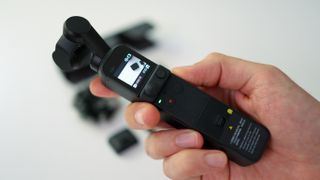
Why you can trust TechRadar
☑️ 100s of cameras reviewed
☑️ 15 years of product testing
☑️ Over 16,000 products reviewed in total
☑️ Nearly 200,000 hours testing tech
The most important features for a YouTube camera are its video quality, autofocus, in-body image stabilization and audio options, so those are the main areas our tests focus on.
To review the video quality, we shoot at the camera’s highest resolution and frame-rate in a variety of handheld scenes, including the popular walk-and-talk style, to see how it handles colors, skin tones, detail and rolling shutter. We also include high-contrast scenes to test how well the auto-exposure and white balance adapt to changes in lighting.
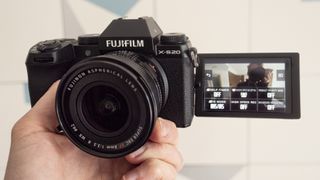
These tests are also a good opportunity to the test the YouTube camera’s Face and Eye tracking autofocus, along with the quality of its stabilization (both electronic and mechanical, if available).
Another thing we test in these scenes is an oft-overlooked part of the YouTube equation for vloggers: the built-in microphones. If the camera has a microphone input, we’ll also use it with an external lav mic to see how the quality compares to its internal audio.
Many of the latest YouTube cameras include additional features like flat color profiles, articulating touchscreens, built-in ND filters and, in Sony’s case, a ‘product showcase’ feature that’s ideal for those who run a channel from home. If available, we test all of these functions to see how they fare compared to their closest rivals, then wrap up our conclusions based on our various impressions of the camera’s build quality, design, video quality, audio quality and features.
link





